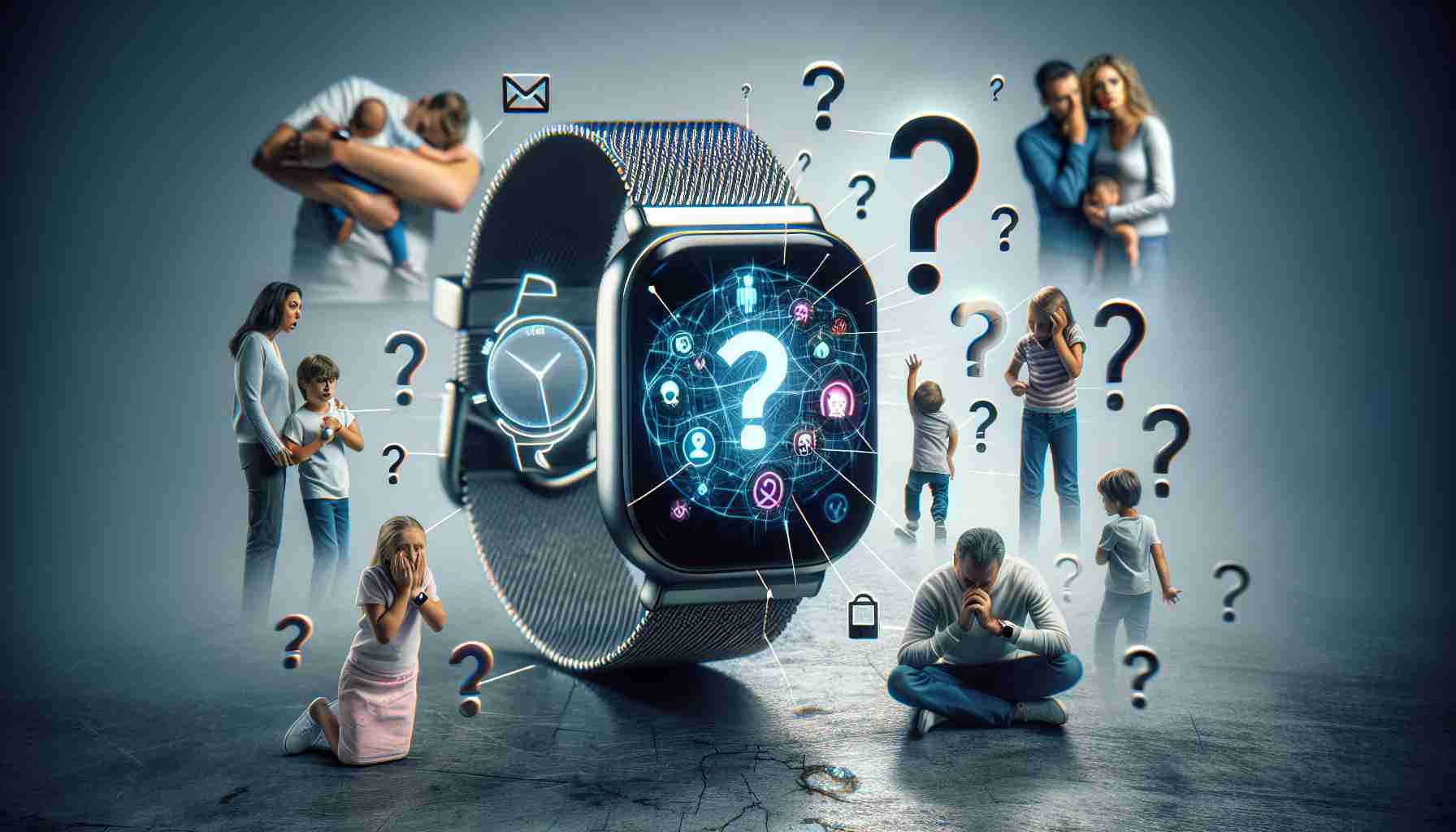Recently, a viral video highlighted a troubling incident involving a brand of children’s smartwatches. The video featured a user who questioned the device about the historical events of the Nanjing Massacre, only to receive a response stating that it “did not exist.” This alarming exchange prompted an official response from the brand, assuring that genuine products would not exhibit such anomalies. They further explained that the smartwatch’s responses cannot be customized, and any erroneous replies could be reported for evaluation.
This incident is not isolated. Similar smartwatches have also generated inappropriate responses, such as suggesting that “all high-tech inventions are Western creations,” which raised further concerns among parents. Given that children often lack the critical thinking skills required to assess the authenticity of information, these misleading answers could dangerously shape their understanding of history and values.
Experts have voiced concerns about the frequency of these issues. They emphasize that many of these products tap into the internet to formulate responses based on keyword searches, resulting in potentially inaccurate and harmful information. The need for tighter regulation on the content AI systems provide, especially for children, is crucial to safeguard their development.
As the popularity of children’s smartwatches continues to rise, it is essential for manufacturers to prioritize ethical considerations in their designs, ensuring that their products are both educational and safe for young users.
Concerns Rise Over Kids’ Smartwatch AI Responses: New Challenges and Solutions
The recent uproar over children’s smartwatches and their AI-generated responses has raised significant alarm among parents, educators, and child development experts. While the issue highlighted through viral videos serves as a wake-up call, deeper investigations reveal a multifaceted problem that requires urgent attention.
What Are the Key Questions Surrounding Kids’ Smartwatch AI?
1. What sources do the AI systems rely on for information?
– Children’s smartwatches often utilize algorithms that pull data from the internet, drawing from various sources. This method increases the risk of exposure to incorrect or biased information, making it challenging to guarantee the accuracy of the responses.
2. How can parents monitor content received by their children?
– Many brands offer limited or no parental control features, which makes it difficult for parents to supervise the interactions their children have with these devices. Consequently, there’s a growing demand for improved monitoring applications.
3. What measures can manufacturers take to mitigate the risks?
– Companies need to implement more robust filtering systems for the AI responses, ensuring that children are provided with age-appropriate and factual information.
Challenges and Controversies
The challenges associated with AI responses in children’s smartwatches revolve around several key controversies:
– Inaccurate Information Dissemination: The potential for these devices to disseminate false information not only fosters misunderstandings but can also perpetuate harmful stereotypes and biases.
– Lack of Regulation: Unlike traditional media, there are scant regulations governing content provided by AI systems in consumer products. The ambiguity of existing guidelines creates a loophole that manufacturers can exploit.
– Impact on Child Development: The reliance on technology for information can potentially diminish children’s ability to critically analyze information, affecting their learning and cognitive growth.
Advantages and Disadvantages of AI Responses in Children’s Smartwatches
Advantages:
– Accessibility of Information: Smartwatches can make information more accessible to children, effectively acting as an educational tool.
– Engagement: Interactive features can enhance engagement, appealing to the tech-savvy generation eager to learn through varied means.
– Convenience: They allow children to ask questions in real time, paving the way for curiosity-driven learning.
Disadvantages:
– Misinformation Risks: The potential for inaccuracies can severely hinder a child’s understanding of crucial topics.
– Over-Reliance on Technology: Children may lean on devices for information rather than cultivating their analytical skills.
– Privacy Concerns: Many smartwatches collect data that could endanger children’s privacy and security.
Moving Forward: Solutions and Recommendations
As the education sector and technology community adapted to these challenges, several recommendations emerge:
– Stricter Content Regulation: Governments and regulatory bodies must refine their approaches to ensure that AI information systems are held to the same standards as educational platforms.
– Enhanced Parental Control Features: Manufacturers should invest in developing robust parental controls, enabling guardians to monitor and curate content for their children.
– Educational Partnerships: Collaborating educational institutions to curate approved content can help in creating a safer informative environment for children.
In summary, while children’s smartwatches present numerous advantages, the risks associated with their AI responses necessitate immediate action for improving content delivery. As these devices continue to evolve, both manufacturers and regulators must prioritize children’s cognitive and emotional safety to foster a healthy interaction with technology. For further details and insights, visit Children’s Health Defense for expert opinions and resources on children’s health technology concerns.
























